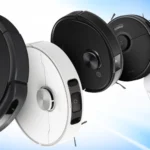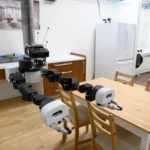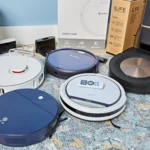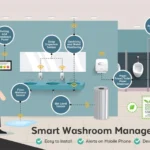Picture this: You come home after a long day at work, and your floors are immaculately clean, but you didn’t lift a finger to clean them. Sound too good to be true? Thanks to the advancements in technology, smart vacuum cleaners have made this possible. These intelligent robots use Artificial Intelligence (AI) to clean floors effectively and efficiently, making it easier for homeowners to keep their homes clean without hassle. In this article, we’ll explore what smart vacuum cleaners are, how they work, the AI technology behind them, their key features, and what to consider when buying one. Let’s dive in and discover the world of smart vacuum cleaners!
What Are Smart Vacuum Cleaners?
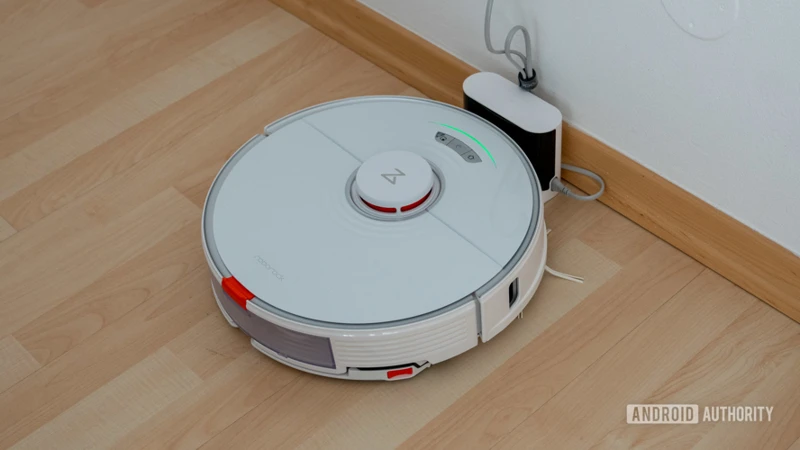
If you’re tired of spending countless hours cleaning your home, it’s time to embrace the future with smart vacuum cleaners. These intelligent devices have taken the market by storm, allowing you to sit back and relax while your floors are cleaned with ease. Smart vacuum cleaners are more than just fancy gadgets – they’re designed to make your life easier by harnessing the power of advanced technologies like artificial intelligence. In this section, we’ll explore what smart vacuum cleaners are and how they can benefit you in your home. If you’re curious about whether smart vacuums are worth the investment, keep reading to learn more. And if you’re wondering about the advantages of using a smart vacuum cleaner, check out our previous article on the topic.
Benefits Of Smart Vacuum Cleaners
Smart vacuum cleaners are becoming more and more popular due to their innovative features and remarkable benefits. Here are some of the top advantages of using a smart vacuum cleaner:
- Time and Effort-Saving: One of the biggest advantages of smart vacuum cleaners is that they save time and effort. Unlike traditional vacuum cleaners, smart vacuums use advanced technology to clean homes automatically. You can set the device to perform cleaning at a particular time or day, relieving you from tedious and time-consuming cleaning chores. You can focus on other essential activities while the device automatically cleans your home.
- Deep Cleaning Capabilities: Another benefit of smart vacuum cleaners is their deep cleaning capabilities. With advanced technologies, these devices can easily clean nooks and corners that a regular vacuum cleaner might miss. For instance, some smart vacuums have the ability to detect and clean allergens, dust, and pet hair, making them an excellent option for people with allergies or pets.
- Improved Home Security: Some smart vacuums have integrated security features that make them an excellent option for enhancing home security. For instance, some devices can create a map of your home and send notifications to your smartphone when they detect unusual activity or when there is a change in the floor layout. This feature allows you to monitor your home remotely and track any intrusions or suspicious activity.
- Health Benefits: Smart vacuum cleaners can enhance the health of your home environment. They can eliminate dust, dirt, and allergens that tend to accumulate on floors, carpets, and furniture. This can help reduce the occurrence of respiratory conditions such as asthma and COPD.
- Professional Cleaning Results: Smart vacuum cleaners can provide professional cleaning results. They are equipped with powerful suction systems that can clean various surfaces effectively. They have advanced floor mapping and navigation technologies that enable them to clean the whole area thoroughly.
These benefits make smart vacuums an excellent investment for people who want an innovative solution to their home cleaning needs. They can help you save time and enhance your overall living experience. With different smart vacuum models and brands available in the market, you have plenty of options to choose from based on your preferences and unique cleaning requirements.
How Smart Vacuum Cleaners Work
Smart vacuum cleaners work through a combination of advanced technologies that allow them to navigate and clean autonomously. These technologies include sensors, motors, and programming that allow the robot vacuum to move around your home and clean various surfaces.
Sensors: Smart vacuums come equipped with a variety of sensors, including drop sensors and obstacle sensors. Drop sensors help the device avoid falling down stairs, while obstacle sensors detect and navigate around objects such as furniture.
Motors: The motor inside the vacuum helps the device create suction to pick up dirt and debris from your floors. Some smart vacuums use multiple motors to increase suction power and improve performance.
Programming: Advanced programming guides the robot vacuum through the cleaning process. This programming includes algorithms that help the device map out your home and plan a cleaning route. Some smart vacuums can even learn your home’s layout over time and become more efficient and effective with each use.
Battery: Smart vacuum cleaners are powered by rechargeable batteries. Most models come equipped with lithium-ion batteries, which provide longer run time and faster charging than other battery types.
Brushes: The brushes on the bottom of the vacuum help to stir up dirt and debris, making it easier for the device to pick it up. Some smart vacuums come with a variety of brush types to clean different surfaces, such as carpet and hardwood floors.
Smart vacuum cleaners offer an easy and convenient way to keep your home clean. By combining a variety of advanced technologies, these devices can navigate and clean your floors effectively and autonomously, saving you time and effort. For more information on the benefits of smart vacuums, check out our previous article on the topic.
AI Technology: The Brains Behind Smart Vacuum Cleaners
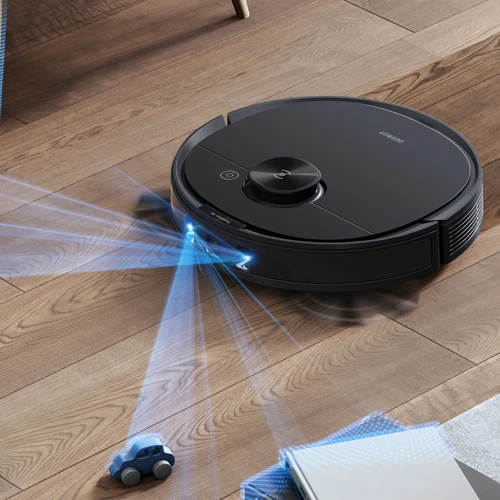
As we move towards an era of smart living, our homes are getting smarter too. Smart home appliances like smart speakers, smart thermostats, and smart lights have already revolutionized our home routines. Another revolutionary product is the smart vacuum cleaner. Using the latest advancements in Artificial Intelligence (AI) technology, smart vacuum cleaners have become increasingly popular in recent years. They not only save time and effort but also provide a more efficient and effective cleaning experience. In this section, we will explore in detail how AI technology is the brainpower behind the next generation of smart vacuum cleaners.
Why AI Is Crucial For Smart Vacuum Cleaners
AI, or artificial intelligence, is crucial for smart vacuum cleaners because it allows them to function autonomously, in a way that standard vacuum cleaners cannot. Smart vacuums leverage AI to analyze data and learn from it, so that they can navigate homes with ease and clean more efficiently.
One of the biggest advantages of AI in smart vacuum cleaners is the ability to create and maintain maps of the areas they need to clean. With mapping and navigation technology, smart vacuums can create a virtual map of a home’s floor plan, marking spaces and avoiding obstacles. They can use this data to plan their cleaning routes and modify them on-the-go, ensuring optimal cleaning.
Obstacle detection and avoidance is another important feature made possible through AI. Smart vacuums can use sensors, cameras and LI-DAR to detect and recognize obstacles in their path, such as furniture or pets. They then can calculate the best way around these obstacles or alert users to their presence with an app notification.
AI also plays a crucial role in the development of high-efficiency filters and technology. By analyzing air quality data, smart vacuums can detect and filter out harmful particles that can cause allergies in people or pets, such as pollen or dust mites. Smart vacuum cleaners are particularly beneficial for pet owners or people with asthma or respiratory illnesses.
AI allows smart vacuum cleaners to integrate with smart home devices, such as Amazon Alexa or Google Home, and use voice commands to initiate cleaning, set schedules, or check status. With smart home integration, users can even control their smart vacuums from their smartphones or tablets.
AI also enables auto recharge and resume cleaning, which is particularly useful for large homes or busy households. Smart vacuums can detect when their battery is low and return to a charging dock to recharge. Once they are fully charged, they can automatically resume cleaning where they left off.
Finally, AI allows smart vacuums to learn from their surroundings and become more efficient over time. Some models, such as the Enviro smart vacuum, use machine learning algorithms to optimize their cleaning schedule and improve their suction power based on usage patterns.
In sum, AI is crucial for smart vacuum cleaners because it allows them to navigate and clean a home autonomously, detect and avoid obstacles, filter out harmful particles, integrate with smart home devices, and learn from their surroundings. These features make smart vacuum cleaners a powerful, time-saving tool for households looking for an easier and more hands-off cleaning experience.
How AI Helps Smart Vacuum Cleaners Clean Effectively
AI technology is the brain behind any smart vacuum cleaner. It plays a crucial role in ensuring that your floor is cleaned effectively and efficiently. With AI, smart vacuums can adapt to your cleaning preferences, schedule, and even your home’s layout.
Here are some ways in which AI helps smart vacuum cleaners clean effectively:
| Mapping and Navigation: | AI helps in creating detailed maps of your home, allowing the smart vacuum cleaner to navigate seamlessly, find its way back to the charging station, and optimize cleaning patterns based on the layout of your home. This feature significantly boosts cleaning efficiency. |
| Obstacle Detection and Avoidance: | With AI, smart vacuum cleaners can detect and avoid obstacles in their cleaning path, such as furniture, walls, and stairs. This eliminates the need to monitor the vacuum constantly, enhancing the user’s convenience and safety. |
| Multi-Surface Cleaning Technology: | Smart vacuum cleaners use AI to detect different floor types such as carpets or hardwood, and can automatically adjust their suction, ensuring effective cleaning without compromising on battery or cleaning time. |
| Self-Emptying Dustbins: | Many smart vacuums use AI to monitor their capacity, and will head back to their charging station when they need to empty the collected debris, eliminating the need for frequent intervention. This feature is especially useful for pet owners or people with allergies living in a dusty environment. |
AI is not only essential for these features, but it also enables smart vacuums to learn and adapt to your cleaning needs over time. The longer your smart vacuum cleaner is in use, the more data it collects about your home, your preferences, and your cleaning habits. Consequently, the AI can optimize cleaning schedules, suction power, and automatic emptying of the dustbin to ensure that your home is spotless with minimal effort from you.
AI technology is instrumental in unlocking the full potential of smart vacuum cleaners. By offering unique features such as mapping, obstacle detection, and automatic emptying, AI makes cleaning more efficient, convenient, and less labor-intensive. This is why smart vacuums with AI are becoming increasingly popular with pet owners, allergy sufferers, and people looking to save time and effort when cleaning their homes. If you’re interested in learning more about how smart vacuum cleaners can make your life easier, check out our related article on how smart vacuums can save you time and effort.
Key Features of Smart Vacuum Cleaners
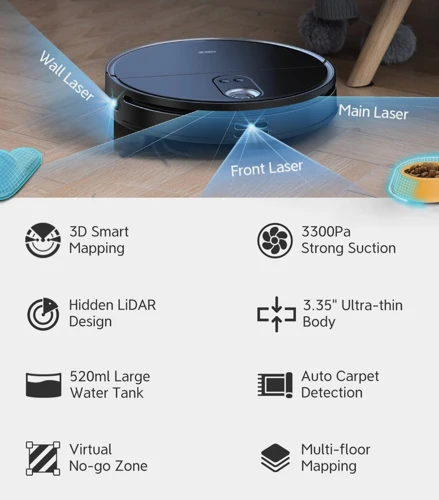
Smart vacuum cleaners have come a long way since their inception. They once used to be simple robotic devices that would move around your house and clean up whatever they could capture in their path. However, with advancement in technology, today’s smart vacuum cleaners are equipped with several intelligent features that make them efficient and effective cleaning devices. These features include Mapping and Navigation, Obstacle Detection and Avoidance, Voice and Mobile App Control, among others. In this section, we will delve into all these features and understand how they help smart vacuum cleaners clean effectively.
Mapping and Navigation
One of the most important features of smart vacuum cleaners is their mapping and navigation capabilities. They use advanced sensors and cameras to scan and create a digital map of your home’s layout, which they use to clean every nook and cranny. This is particularly useful if you have large areas of floor space or multiple rooms, as it helps the smart vacuum cleaner to navigate around your home effectively without getting lost or missing any spots.
Mapping: Smart vacuum cleaners use a variety of mapping technologies including lasers, cameras, and sensors to map your home’s layout. The most advanced models use real-time mapping, which means they constantly update their map as they clean, allowing them to clean more efficiently and effectively.
Navigation: Navigation is just as important as mapping when it comes to cleaning performance. Smart vacuum cleaners use their maps to navigate around your home without bumping into furniture or getting stuck in corners. They can even detect obstacles and adjust their path to avoid them.
Virtual boundaries: In addition to mapping and navigation, some smart vacuum cleaners allow you to set virtual boundaries within their map. This means you can define areas in your home that you don’t want the vacuum to go, or that you want it to clean more thoroughly.
Room recognition: Some of the most advanced smart vacuum cleaners can even recognize different rooms in your home and adjust their cleaning methods accordingly. This means they will use a different cleaning pattern on a carpeted bedroom floor than they will on a hardwood living room floor.
It’s important to note that mapping and navigation technology can vary greatly between different models and brands of smart vacuum cleaners. To find the best one for your needs, consider factors such as the size and shape of your home, your cleaning preferences, and your budget.
If you have pets or suffer from allergies, check out our article on smart vacuum cleaners for pet hair and allergies. Or, if you’re interested in a smart vacuum cleaner that is eco-friendly, read about the Enviro Smart Vacuum. For those who prioritize home security, check out our article on smart vacuums for home security. And, if you’re looking for a smart vacuum cleaner for professional cleaning purposes, read about smart vacuum cleaners for professional cleaning.
Obstacle Detection and Avoidance
Smart vacuum cleaners are equipped with high-tech obstacle detection and avoidance technology that helps them move around your home with ease and clean efficiently. This technology allows them to detect and navigate around any obstacles that may come in their path, without getting stuck or knocking things over.
Here are some of the features that enable smart vacuum cleaners to detect and avoid obstacles:
- Sensors: These are placed on the body of the vacuum cleaner and use infrared or laser technology to detect nearby objects. Some smart vacuum cleaners can have up to 10 sensors, ensuring they don’t miss anything in their path, and can map out your home’s layout to clean accordingly.
- Mapping and Navigation: Smart vacuum cleaners use mapping and navigation technology to identify the layout of your home and navigate around it efficiently. This allows them to avoid obstacles and clean around them, without getting stuck.
- Collision Detection: Smart vacuum cleaners can detect when they are about to collide with an object and change their trajectory to avoid any contact. This helps to prevent any damage to your furniture or walls.
- Drop Sensors: These sensors are used to detect stairs or drop-offs, preventing the vacuum from falling down them. This ensures safe cleaning in multi-level homes.
Benefits of Obstacle Detection and Avoidance:
- Efficient Cleaning: By avoiding obstacles, smart vacuum cleaners can move around your home smoothly, cleaning every nook and cranny without getting stuck or knocking over anything in their path.
- Safe and Damage-Free Cleaning: The obstacle detection and avoidance technology helps smart vacuum cleaners avoid any possible damage to furniture, walls, or the vacuum itself.
- Less Need for Supervision: With obstacle detection and avoidance technology, you can set up your smart vacuum cleaner to start cleaning while you’re away without worrying about it getting stuck, lost or damaging anything.
Smart vacuum cleaners are designed to make your life easier, and the obstacle detection and avoidance technology is one of the many features that make them a great addition to your home cleaning routine. With this technology, you can trust your smart vacuum cleaner to clean efficiently and safely, without any damage or hindrance.
Smart Home Integration
One of the standout features of smart vacuum cleaners is their ability to integrate with smart home systems. With smart home integration, you can control and monitor your smart vacuum cleaner through your smartphone, tablet, or voice assistant like Alexa or Google Assistant.
Here are some popular smart home integrations that you can look for in a smart vacuum cleaner:
| Smart Home Integration | Description |
|---|---|
| Amazon Alexa | With Alexa integration, you can use voice commands to start, stop, or dock your vacuum cleaner. You can also check the status of the cleaning progress and receive alerts when the job is done. |
| Google Assistant | Like Alexa, Google Assistant integration allows you to control your smart vacuum cleaner with voice commands. You can also get status updates and alerts through your Google Home device or Google Home app. |
| Apple HomeKit | HomeKit integration enables you to control your smart vacuum cleaner through the Home app or Siri. You can initiate or stop cleaning jobs, check the status of the dustbin or filter, and receive notifications about the cleaning progress. |
| IFTTT | IFTTT (If This Then That) allows you to create custom commands, or “applets,” that trigger your smart vacuum cleaner based on specific conditions. For example, you can set your vacuum cleaner to start cleaning when you leave the house, or to dock itself when the battery runs low. |
Smart home integration not only makes it easier to control your smart vacuum cleaner, but it also allows you to automate your cleaning routines and customize your cleaning preferences. By connecting your smart vacuum cleaner to other smart devices in your home, you can create a more seamless and efficient cleaning experience.
Before purchasing a smart vacuum cleaner, be sure to check its compatibility with your existing smart home system. Some models may require a separate hub or bridge to connect, while others have built-in Wi-Fi for easy integration.
Investing in a smart vacuum cleaner with smart home integration is a smart choice for busy individuals who want to simplify their cleaning routine and have more control over their home environment.
Voice and Mobile App Control
One of the key features of smart vacuum cleaners is their ability to be controlled through both voice commands and mobile app. This level of convenience allows you to schedule cleanings, turn the device on and off, and adjust settings with ease. Let’s take a closer look at each method of control:
| Voice Control | Mobile App Control |
|---|---|
| With voice control, you can simply give your smart vacuum cleaner commands through your smart speaker or virtual assistant. This feature is especially useful for those who may have difficulty moving around, or for busy individuals who want to multitask while cleaning. Additionally, it’s a hands-free way to control your cleaning routine, making it more convenient than ever before. | Mobile app control is another popular way to operate your smart vacuum cleaner. Most smart vacuum companies offer apps that let you schedule cleanings, adjust settings, and even receive alerts when the device needs maintenance. Some devices even include floor maps that allow you to view cleaning progress in real-time on the app. |
| However, it’s important to note that not all smart vacuum cleaners are compatible with voice control. If you’re interested in adding voice control to your cleaning routine, be sure to check if the device is compatible with your smart speaker or virtual assistant. | It’s worth noting that some brands may require you to create an account through their app in order to use mobile app control. Be sure to read the terms of use and privacy policy carefully before signing up. |
| Both voice and mobile app control offer a level of convenience that traditional vacuum cleaners simply don’t provide. If you’re someone who values ease of use and technology integration, a smart vacuum cleaner with voice and mobile app control is a must-have addition to your home. |
The ability to control your smart vacuum cleaner through either voice commands or mobile app is a game-changer in the world of cleaning technology, making it more efficient and convenient than ever before.
Auto Recharge and Resume Cleaning
One of the key features of smart vacuum cleaners that has become increasingly popular in recent years is their auto recharge and resume cleaning capability. This feature allows the vacuum to automatically return to its charging station when it is low on battery, and then resume cleaning where it left off after it has fully recharged.
To better understand this feature, we can break it down into its components and explore how it works. The table below outlines the main elements of auto recharge and resume cleaning and their functions:
| Component | Function |
|---|---|
| Charging station | Serves as the base station where the vacuum can recharge its batteries when they are low. |
| Battery sensors | Detect when the vacuum’s battery is low and need to be recharged. They also communicate with the charging station to ensure the vacuum can find its way back to the station. |
| Mapping and navigation system | Remembers the vacuum’s cleaning path, so when the vacuum returns to its charging station, it knows where it left off and can pick up cleaning from the same spot. |
| Memory and processing system | Continuously records and stores the vacuum’s cleaning data, such as its cleaning patterns and the location of obstacles. This information is used to help the vacuum navigate and return to its charging station, as well as to continue cleaning effectively once it resumes cleaning. |
The auto recharge and resume cleaning feature offers several benefits to users. For instance, it increases the efficiency of the vacuum cleaning process because it allows the vacuum to clean a larger area without the need for manual intervention. It also ensures that the vacuum is always ready to clean, since it can recharge itself as soon as its battery is getting low.
However, it’s important for users to keep in mind that not all smart vacuum cleaners come with this feature. Additionally, some models may be better suited for larger areas or have longer battery life, which can impact their ability to recharge and resume cleaning. It’s essential to consider this feature and other factors before choosing a smart vacuum cleaner that meets your specific cleaning needs.
Multi-Surface Cleaning Technology
Smart vacuum cleaners are designed to clean different surfaces with ease, from hardwood floors to carpets and rugs. The multi-surface cleaning technology of these devices makes this possible, allowing them to adjust to different surfaces and clean them effectively.
To ensure efficient cleaning on a variety of surfaces, smart vacuum cleaners use different types of brushes and suction power. Some models come with interchangeable brushrolls, which allow them to transition effortlessly from carpets to hardwood floors. The brushrolls come in different sizes and types, including rubberized and bristled brushrolls, for thorough cleaning.
In addition to the brushrolls, smart vacuum cleaners are equipped with sensors and algorithms that adjust the suction power depending on the surface that needs cleaning. For instance, hardwood floors do not require as much suction power as carpets or rugs. The sensors can detect the surface material and adjust the suction power accordingly, ensuring thorough cleaning while conserving energy.
Some smart vacuum cleaners use laser technology to scan the floors and adjust to different surfaces. The lasers emit signals that bounce off the floor and create a map of the room. This technology helps the device to recognize the surface area, detect any obstacles or barriers, and clean around them effectively.
The multi-surface cleaning technology of smart vacuum cleaners is a great advantage for homeowners who have different types of flooring in their homes. It saves time and effort, and ensures thorough cleaning of all surfaces. Before purchasing a smart vacuum cleaner, it is important to check if it has this feature and whether it is efficient in cleaning different surfaces.
Below is a table summarizing the key features of multi-surface cleaning technology in smart vacuum cleaners:
| Feature | Description |
|---|---|
| Interchangeable brushrolls | Brushrolls that can be switched out to clean different surfaces |
| Sensors and algorithms | Technology that adjusts suction power based on the surface being cleaned |
| Laser mapping technology | Laser signals that create a map of the room and adjust cleaning to different surfaces |
Multi-surface cleaning technology is an essential feature of smart vacuum cleaners. It allows the devices to transition seamlessly between different flooring surfaces, ensuring thorough cleaning and proper maintenance of all types of floors.
High-Efficiency Filters
When it comes to keeping your home clean, one of the most important features of any vacuum cleaner is the filtration system. Smart vacuum cleaners come equipped with high-efficiency filters that are designed to capture even the smallest particles of dust and allergens, leaving your home free of airborne contaminants that can cause a variety of health issues.
These filters are generally made from HEPA (High-Efficiency Particulate Air) material, which is designed to capture particles as small as 0.3 microns in size. This means that they are able to trap tiny particles like pet dander, pollen, and even bacteria, helping to improve the air quality in your home.
In addition to their superior filtration capabilities, many smart vacuum cleaners also feature washable filters that can be easily cleaned and reused. This not only saves you money on replacement filters, but it also helps to reduce environmental waste.
Here are some of the key advantages of high-efficiency filters in smart vacuum cleaners:
| Advantages | Description |
|---|---|
| Improved Air Quality | The HEPA material used in these filters is incredibly effective at capturing small particles, which helps to improve the overall air quality in your home |
| Reduced Allergies | By removing dust, dander, and other allergens from your home, these filters can help to reduce allergy symptoms in those who suffer from them |
| Reduced Pet Odors | If you have pets, these filters can help to remove the pet dander and other debris that can cause lingering pet odors in your home |
| Easy to Clean and Reuse | Many high-efficiency filters are washable, making them easy to clean and reuse multiple times before needing replacement |
The high-efficiency filters found in smart vacuum cleaners are an incredibly important feature that should not be overlooked when choosing a vacuum cleaner for your home. Not only do they help to keep your home clean, but they also play a crucial role in maintaining good air quality and reducing allergens and other contaminants.
Self-Emptying Dustbins
One of the most convenient features of smart vacuum cleaners is their self-emptying dustbins. Instead of manually emptying the dustbin after every use, these vacuums have a larger bin that can collect weeks’ worth of dust and debris. The bin is designed to self-empty into a larger container or bag, so you don’t have to worry about touching dirt and dust during the process.
Here are some benefits of self-emptying dustbins:
- Less Maintenance: Since the dustbin empties itself, you don’t have to spend time cleaning it after every use or worry about it getting full quickly.
- More Efficient Cleaning: With a larger dustbin, the vacuum can clean more without stopping to empty the bin. This means more efficient cleaning and less downtime.
- Less Exposure: With a self-emptying dustbin, you don’t have to come in contact with the dust and debris collected by the vacuum. This is especially beneficial for people with allergies or respiratory issues.
However, it’s important to note that self-emptying dustbins can add to the cost of a vacuum cleaner. This feature is typically available on high-end and premium models, which may not be affordable for everyone. If you prioritize convenience and efficiency over cost, then a smart vacuum cleaner with a self-emptying dustbin may be worth the investment.
Noise Reduction Technology
One of the most important factors to consider when purchasing a smart vacuum cleaner is the noise level it produces. Nobody wants to be disrupted by a loud and noisy vacuum cleaner when trying to relax at home. That’s why many smart vacuum cleaners come equipped with noise reduction technology to make the cleaning experience more pleasant and less intrusive.
Some of the most advanced smart vacuum cleaners use specialized technology to minimize noise output while still maintaining powerful suction capabilities. This means that you’ll be able to let your vacuum cleaner do its job without worrying about it disturbing others in your home or disrupting your work.
There are a variety of different noise reduction technologies that smart vacuum cleaners can use to achieve quieter operation. Some models may utilize multiple technologies simultaneously in order to achieve even greater noise reduction.
One of the most common ways that smart vacuum cleaners reduce noise output is through the use of high-efficiency motors with lower sound levels. These motors are built to operate at lower decibel levels while still delivering powerful suction performance.
Another technique used by some smart vacuum cleaners is the inclusion of sound insulation inside the device. By adding sound-absorbing materials to the interior of the vacuum cleaner body, these models are able to decrease noise levels without sacrificing cleaning performance.
Finally, some advanced smart vacuum cleaners also use real-time sound mapping and analysis to adjust their suction power and noise output based on the environment they’re cleaning. This allows the vacuum cleaner to operate at the most efficient level possible while keeping the maximum amount of noise to a minimum.
When choosing a smart vacuum cleaner, it’s important to consider the specific noise reduction technologies and levels that each model utilizes. By taking the time to find a vacuum cleaner that meets your noise reduction needs, you can enjoy a quieter and more peaceful cleaning experience that won’t disrupt your daily activities.
| Noise Reduction Technology | How it Works |
|---|---|
| High-efficiency motors | Operate at lower decibel levels while still delivering powerful suction performance. |
| Sound insulation | Adds sound-absorbing materials to the interior of the vacuum cleaner body, reducing noise levels without sacrificing cleaning performance. |
| Real-time sound mapping and analysis | Adjusts suction power and noise output based on the environment being cleaned to operate at the most efficient level possible while keeping noise to a minimum. |
What to Consider Before Buying a Smart Vacuum Cleaner
Before investing in a smart vacuum cleaner, there are several factors you should consider. Purchasing a smart vacuum cleaner can be a significant investment, so it’s important to ensure that you choose the right one for your needs. With a wide variety of options available on the market, it can be overwhelming trying to figure out which one is best for you. Thankfully, by taking a few key factors into account, you can make an informed decision on which smart vacuum cleaner is perfect for you and your home. Let’s take a closer look at some of the things you should consider before making a purchase.
Size and Shape of Your Home
When considering buying a smart vacuum cleaner, it is important to keep in mind the size and shape of your home. Here are some factors to consider:
1. Square Footage: The size of your home is a crucial factor in choosing the right smart vacuum cleaner. Larger homes may require a more powerful robot vacuum with a longer battery life, while smaller homes may do well with a more compact model.
2. Floor Plan: The layout of your home is also important. A model with strong mapping capabilities would be beneficial in a home with many rooms or a complex layout, while a simpler model may work well in a more straightforward home.
3. Carpeted vs. Hardwood Floors: Some smart vacuum cleaners are specifically designed for carpeted floors, while others excel on hardwood floors. Be sure to choose a model that matches the flooring in your home.
4. Stairs and High-Traffic Areas: If you have a lot of stairs or high-traffic areas in your home, consider a robot vacuum with sensors that can detect and avoid falls, as well as a model with strong suction power.
5. Furniture and Obstacles: If your home is filled with furniture and obstacles, a smart vacuum cleaner with obstacle detection and avoidance capabilities can ensure that it doesn’t get stuck or damaged.
Keeping these factors in mind, you can choose a smart vacuum cleaner that will effectively clean your home and provide you with convenience and ease.
Your Budget and Cleaning Needs
When it comes to buying a smart vacuum cleaner, considering your budget and cleaning needs is crucial. Here are some factors that you should take into account:
- Cleaning Frequency: If your home requires daily vacuuming, investing in a high-quality smart vacuum cleaner is advisable. However, if you need light cleaning twice or thrice a week, an affordable option can do the job.
- Cleaning Surface: If you have carpets or rugs, choose a smart vacuum cleaner with powerful suction and multi-surface cleaning technology. On the other hand, if your home has hardwood or tiled floors, a model with sweeping capabilities will suffice.
- Cleaning Area: If you have a large home, look for models with bigger dustbins and longer battery life. If you have a small home with limited storage space, a compact smart vacuum cleaner may be ideal.
- Add-On Features: Some smart vacuum cleaners come with extra features such as self-emptying dustbins or voice-activated control, but these features come with a higher price tag. Evaluate which add-ons are necessary for your cleaning needs or if they can be skipped to fit your budget.
Keep in mind that expensive does not always mean better. Look for smart vacuum cleaners that offer the right combination of features that cater to your cleaning needs and are within your budget. By doing so, you’ll ensure that you’re getting the best value for money without compromising the quality of cleaning.
Available Smart Features and Compatibility With Your Home Assistant
As we look to buy a smart vacuum cleaner, it’s important to consider the available smart features and compatibility with our home assistant. Not all vacuum cleaners are compatible with every smart assistant, so it’s essential to ensure that the model we select works smoothly with our existing smart home ecosystem. Some popular smart assistants are Alexa, Google Assistant, and Siri.
Below is a table showcasing the compatibility of some of the most popular smart vacuum cleaners with various smart assistants.
| Smart Vacuum Cleaner | Compatible Smart Assistant |
|---|---|
| iRobot Roomba i7+ | Alexa, Google Assistant |
| Shark IQ Robot Self-Empty XL | Alexa |
| Ecovacs Deebot N8 Pro+ | Alexa |
| Roborock S7 | Alexa, Google Assistant |
| Neato Botvac D7 | Alexa, Google Assistant, Siri |
As we can see from the table, the iRobot Roomba i7+ and the Roborock S7 are compatible with both Alexa and Google Assistant. Meanwhile, the Shark IQ Robot Self-Empty XL works only with Alexa. It’s important to check compatibility before making a purchase to ensure that the vacuum cleaner we choose can integrate with our existing smart home ecosystem.
Smart features can significantly enhance our cleaning experience. For example, some models can be controlled through a mobile app, allowing us to start, stop, pause, or schedule cleaning from anywhere. Others can be commanded through voice control through our smart assistant. Additionally, the best smart vacuum cleaners can create room maps with the help of AI technology, which helps them navigate around your home more efficiently.
It’s essential to check the available smart features before purchasing a smart vacuum cleaner. Some popular features to look for include mapping and navigation, voice and app control, and integration with other smart home devices. By selecting a vacuum cleaner that caters to our needs and preferences, we can ensure a seamless, effortless, and efficient cleaning experience.
Cleaning Performance and Maintenance
When it comes to purchasing a smart vacuum cleaner, it’s important to consider both its cleaning performance and maintenance requirements. Here are some factors to keep in mind:
| Cleaning Performance | Maintenance |
|---|---|
| The suction power of the vacuum is crucial in determining its cleaning performance. Models with high suction power can effectively remove dirt, dust, and pet hair from carpets and hard floors. | Regular maintenance is necessary to ensure your smart vacuum cleaner continues to operate effectively. This includes cleaning the filters, emptying the bin, and checking for any blockages or damage to the brushes. |
| Some models have advanced brushes with features like rubber paddles for tackling pet hair or specially designed bristles for deep cleaning carpets. | Clean the brushes and rollers regularly to keep them free of tangled hair and debris. Some models have self-cleaning brushes for added convenience. |
| Consider the size of the dustbin and the frequency with which it needs to be emptied. Some models have larger dustbins, while others require more frequent emptying. | Check the manufacturer’s instructions for recommended maintenance, including filter replacements and any other necessary upkeep. |
| Pay attention to the vacuum’s noise level, particularly if you plan to use it while you’re home. Many smart vacuums have noise reduction technology to minimize disruption. | Regularly check the battery life and charging time. Some models have longer battery life or quick charge features for added convenience. |
By assessing both cleaning performance and maintenance needs, you can choose a smart vacuum cleaner that not only cleans effectively but is also easy to maintain in the long run.
Conclusion
After reading this comprehensive guide, we hope you now have a better understanding of how smart vacuum cleaners use AI to clean effectively. With the advancements in technology, smart vacuum cleaners have finally made cleaning less of a chore and more of a convenience.
If you’re in the market for a smart vacuum cleaner, it’s important to consider several factors before purchasing one. The size and shape of your home, your budget, cleaning needs, available smart features and compatibility with your home assistant, cleaning performance, and maintenance are all crucial factors to consider.
Smart vacuum cleaners come equipped with a variety of features, including mapping and navigation, obstacle detection and avoidance, smart home integration, voice and mobile app control, auto recharge and resume cleaning, multi-surface cleaning technology, high-efficiency filters, self-emptying dustbins, and noise reduction technology. These features make smart vacuum cleaners a valuable addition to any home.
AI technology is the brain behind smart vacuum cleaners, enabling them to clean effectively and efficiently. It’s important to note that not all smart vacuum cleaners are created equal, and the quality of AI technology can vary between models and manufacturers.
In conclusion, a smart vacuum cleaner is a wise investment for those who want to keep their homes clean without spending too much time and effort. With its advanced features and AI technology, a smart vacuum cleaner can make cleaning less of a chore and more of a convenience. Don’t hesitate to do your research and find the best smart vacuum cleaner that suits your needs and budget.
Frequently Asked Questions
1. How do smart vacuum cleaners differ from traditional vacuum cleaners?
Smart vacuum cleaners use AI technology to map and navigate the environment, detect and avoid obstacles, and clean multiple surfaces effectively. Traditional vacuum cleaners lack these features.
2. What is the benefit of using a smart vacuum cleaner?
Smart vacuum cleaners offer convenient, hands-free cleaning, saving you time and effort. They also provide improved cleaning performance and efficiency.
3. How does AI technology improve the cleaning performance of smart vacuum cleaners?
AI technology enables smart vacuum cleaners to intelligently navigate the environment, detect and avoid obstacles, and adjust their cleaning approach to different surfaces and debris types, resulting in more thorough and efficient cleaning.
4. What is the role of mapping and navigation in smart vacuum cleaners?
Mapping and navigation enable smart vacuum cleaners to create a visual map of the environment and plan optimal cleaning paths, resulting in faster and more efficient cleaning.
5. How does obstacle detection and avoidance work in smart vacuum cleaners?
Smart vacuum cleaners use sensors to detect obstacles in their path, such as furniture or walls, and intelligently maneuver around them to avoid collisions and ensure thorough cleaning.
6. Can smart vacuum cleaners integrate with smart home systems?
Yes, many smart vacuum cleaners can integrate with popular smart home systems, allowing you to control them using your voice or mobile device, and incorporate them into your overall smart home setup.
7. How does auto recharge and resume cleaning work in smart vacuum cleaners?
When the battery level of a smart vacuum cleaner drops, it automatically returns to its charging dock to recharge. Once fully charged, it resumes cleaning from where it left off, ensuring complete cleaning coverage.
8. What is multi-surface cleaning technology in smart vacuum cleaners?
Multi-surface cleaning technology enables smart vacuum cleaners to adjust their cleaning approach based on the surface type, such as hardwood floors, carpets, or tile. This ensures optimal cleaning performance for each surface.
9. Do smart vacuum cleaners come with high-efficiency filters?
Yes, many smart vacuum cleaners come with high-efficiency filters that can capture allergens, dust, and other small particles. This helps improve air quality and reduce allergy symptoms.
10. How can I choose the best smart vacuum cleaner for my home?
Consider factors such as the size and shape of your home, your cleaning needs and budget, the available smart features, and the cleaning performance and maintenance requirements. Research and compare different models to find the one that best meets your needs.



